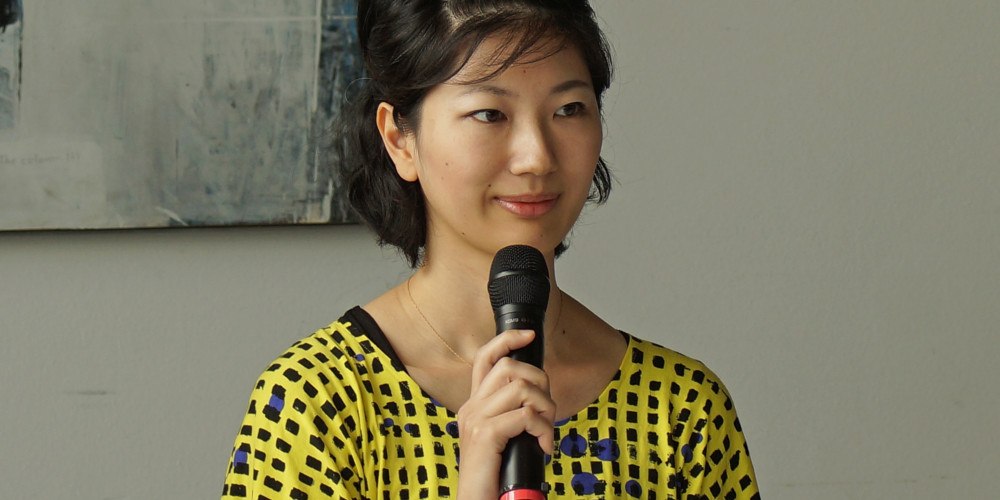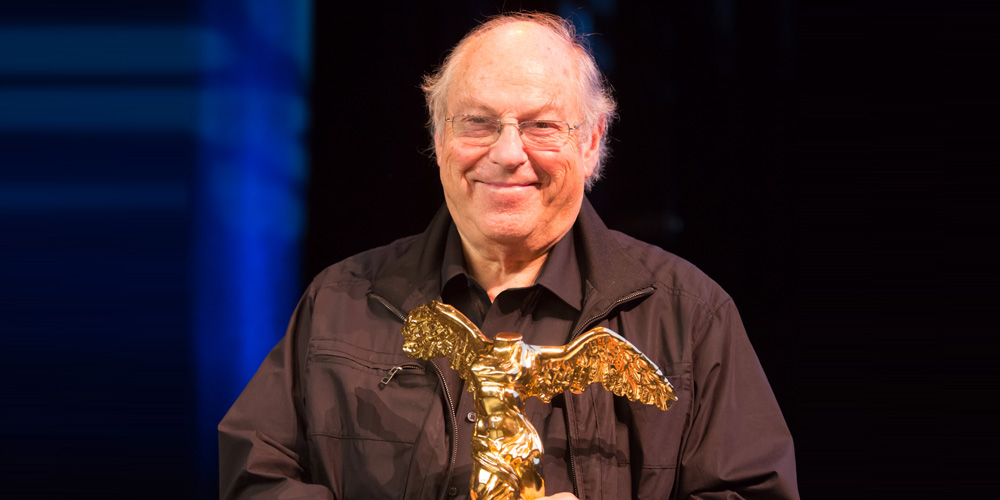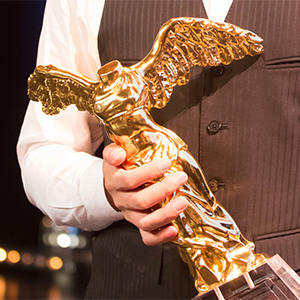
Photo: Tom Mesic
Ever since 1987, the Prix Ars Electronica has served as the international arbiter of outstanding achievements across the media arts genre spectrum. The large number of submissions from many countries worldwide as well as the great diversity of the jurors endow this media art prize competition with an impressive international note. The prizewinners receive the coveted Golden Nica statuettes and cash awards of up to €10,000 per category. They’re also featured at the renowned Ars Electronica Festival in Linz. In this interview with Prix Ars Electronica coordinator Emiko Ogawa, she talks about which categories are being staged this year and how the juries are composed. And she also has a few tips for those who are considering taking part. (The first one being: Don’t miss the March 6, 2015 deadline!)
The submission phase for the Prix Ars Electronica 2015 has started. So, what are the categories of this year in detail?
Emiko Ogawa: This year, 2015, we have six categories. The first category is called “Computer Animation / Film & VFX”. It’s a gate that we open not only for computer animation but also for so called expanded animations, showing the new possibilities of visualizations or new effects of visuals as well. Of course, the technological and aesthetical animations will be also included. The jury has a lot of different views: For example, there is the artist Joe Gerhardt. He was also a jury member last year, he doesn’t focus only on computer animations but he uses interesting ways to visualize scientific data that we have not seen before. Erick Oh from Korea is really the cutting edge and top artist of the computer animation field, a young talent so to say. Also we invite Sabine Hirtes who has the educational background as a university professor. So we really hope that this will be the right constellation to judge the diversity and possibilities of the computer animation field.

Emiko Ogawa during the announcement of the prix winners 2014, Photo: Robertba
Let’s switch to the next category: “Digital Musics & Sound Art”…
Emiko Ogawa: Last year we didn’t open the submission to the “Digital Musics & Sound Art” category but this year we are reopening it again. We really hope that a lot of artists will take part in this category. It’s not only an opportunity for artists producing computer music but also for sound artists who are seeking new acoustic possibilities. If we look at this year’s jury members, for example, we invite the Austrian musician Seppo Gründler and the experimental sound artist Christina Kubisch. Valeria Rueda will also be part of the jury – she has a Mexican background and is one of the leading artists of the new scene of digital music. Another jury member of this category is Naohiro Ukawa, the contemporary artist established an internet streaming channel called “Dommune”. So in this category digital musics, sound art but also digital music installations are welcomed.

Koen Vanmechelen is the last winner of the Golden Nica of the category “Hybrid Art”. Photo: Florian Voggeneder
Another category of 2015 will be “Hybrid Art” – what’s that?
Emiko Ogawa: “Hybrid Art” is maybe a little bit difficult to define but we really welcome the new hybrid and transdisciplinary art projects that for example explore the new visions of life sciences. Merging different fields and creating innovation which cannot achieve with only the existing field in artistic way. One of the jury members this year will be Victoria Vensa, well-known and important artist in the media art and runs an enormous project which explores the new expressions in terms of art, Jens Hauser who has the big knowledge and insight especially in the field of bio art. And Filip Visnjic who is an editor in chief at creativeapplications.net and who did a lot of innovative projects in the fields of technology, art, design and many other. I’m very eager to see them as jury members.
This year you are also looking for the “[the next idea] voestalpine Art and Technology Grant”…
Emiko Ogawa: Within the category “[the next idea] voestalpine Art and Technology Grant” we have a small change. We are focusing not only on arts and technology but also enlarge the frame to celebrate social entrepreneurship as well. Artists, scientists, entrepreneur or whoever can submit her or his idea – the winners will be invited to the Festival Ars Electronica in Linz to meet the Visionary Pioneers of Media Art. There will be also the possibility to talk and exchange knowledge with the participants of the next Future Innovators Summit. Kazuhiko Washio from the Japanese advertising agency Hakuhodo will be part of the jury this year – together with Hakuhodo and ITU we initiated this interesting platform where people from all over the world and from a lot of different fields meet each other. Also Rikke Frisk, founder and co-director of the community focused culture planning company Indgreb will join us again.

u19 jury meeting one year ago with Conny Lee and Sirikit Amann, Photo: Florian Voggeneder
And there will also be a category for young people…
Emiko Ogawa: Yes, the “u19-CREATE YOUR WORLD” category will also open this year. Compared to the other categories this is open for under 19 year-olds and for people who are living in Austria. We are really glad to see the works of the new creative youngsters in Austria. Jury member will be Erwin Wagenhofer who is a well-known director in Austria. But of course we not only welcome animations or videos but also installations or other physical works. We are looking for inspiring insight to us, to the people and to our society in the future. Sirikit Amann is the so-called mother of the category, she is also a jury member this year and since the beginning of the u19 category in 1998. And Conny Lee – we know her voice from Austrian FM4 radio, was part of the jury last year.
One category is a bit more out of the ordinary…
Emiko Ogawa: You are talking about the category “Visionary Pioneer of Media Art”, aren’t you? It was set up in 2014, again this year we will continue to celebrate pioneers of media art. We have a small change compared to last year: We ask seven experts from each areas all over the world to suggest two candidates. The winner of these candidates will be selected by nearly 230 former Nica winners who will vote for their favourite online. Especially since 1987 the Prix Ars Electronica tries to catch the excellence of each year and the aim of this category is to celebrate people who really show visionary concepts. The visionary pioneer will be invited to the Festival Ars Electronica to exchange opinions and share inspirations.

Roy Ascott is the “Visionary Pioneer of Media Art” 2014, Photo: Tom Mesic
Who selects the jury members of the Prix Ars Electronica each year?
Emiko Ogawa: Basically there are internal talks with our artistic director Gerfried Stocker and also the head of the festival and prix department Martin Honzik. Especially in computer animation Christine Schöpf and Jürgen Hagler join us. We talk about persons who are really interested and cutting edge for each field and each category. We are trying to invite a lot of variety of people with different backgrounds. The only thing we do is selecting the jury members. We really trust them. And the final decision of who will get the next Golden Nica is really up to the jury members. They will meet in April 16th to 19th 2015 during the jury meeting in Linz. It is not an online discussion or voting. It’s important that they will meet each other physically. They are super-top and busy people but they will invest their time and come here to Linz for the discussion. Since they have different backgrounds, every year the discussion will be very hard. Through the discussion,they will define the criteria but also the trend of the categories of the year. This will be shown as “Jury Statement” which you can check in the CyberArts catalog.
What advice would you give to people who submit their work to the Prix Ars Electronica?
Emiko Ogawa: There is definitively one thing to say. When you submit your project, please think about these jury members. They want to know your project. Please describe your artwork as if one of the jury members is there. Write the thing you really want to express. You don’t have to write a poem or a scientific essay. Jury members are reading your concepts and they are eager to know what is your project, and why did you do that. It’s your point how to describe your project – the description is very important. Focus on your work. A video or a sound file can also be nice to have for showing your artwork. But in the same level, the description is important. Try to answer the questions: What is your concept? What is your motivation? Good luck!
Informations about the Prix Ars Electronica 2015 and how you can submit your work, you will find on ars.electronica.art/prix!
